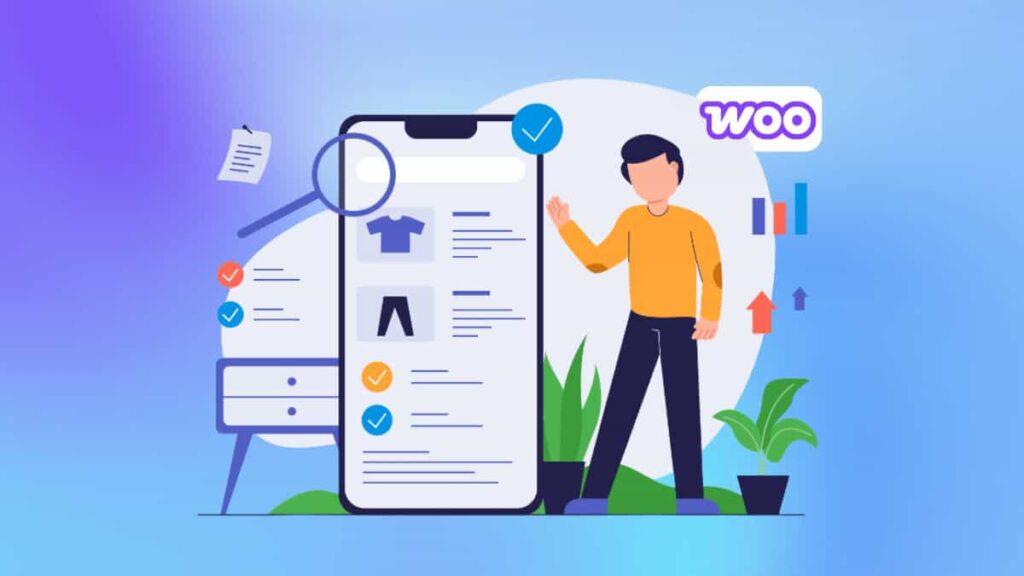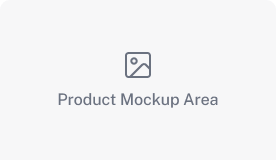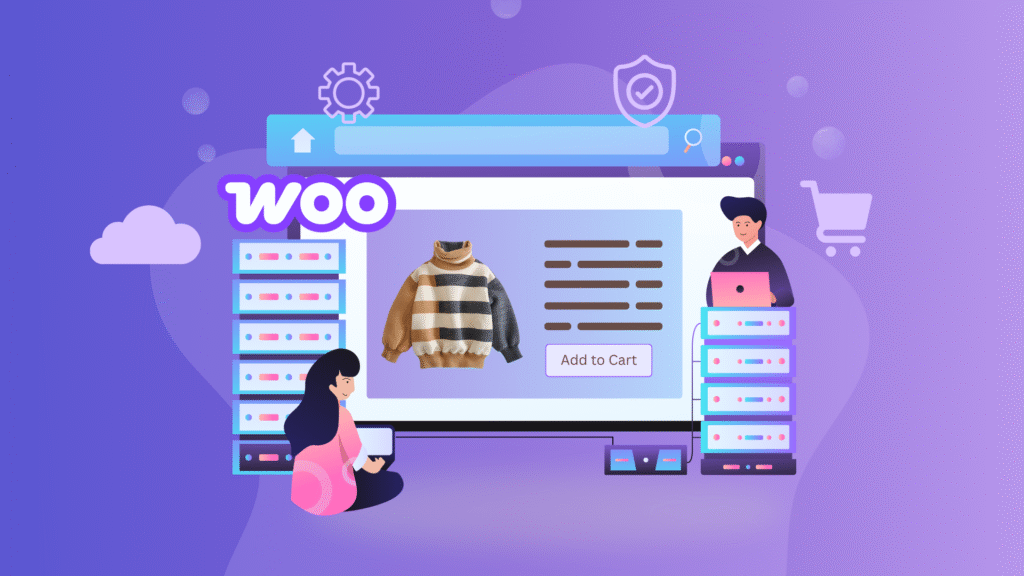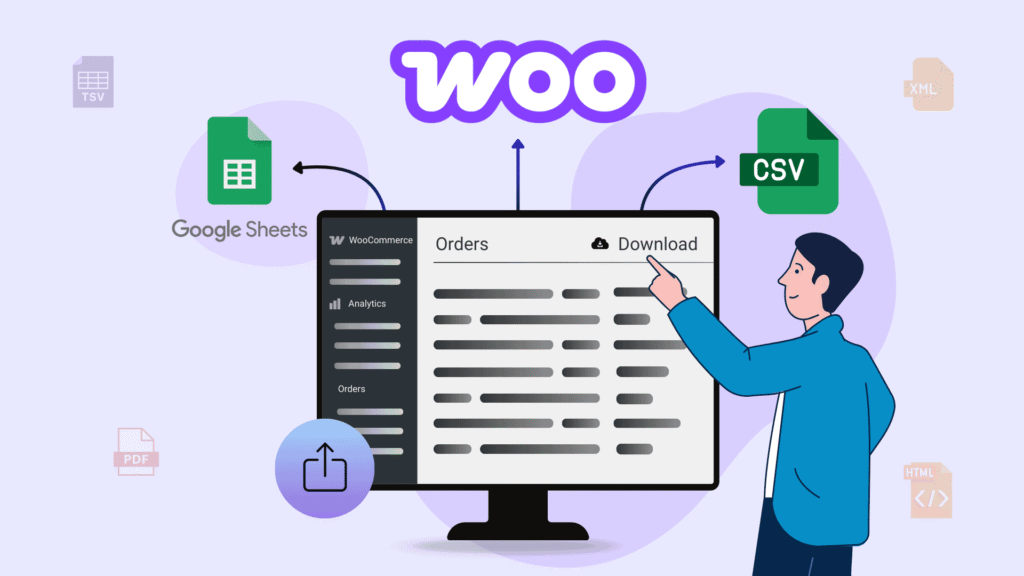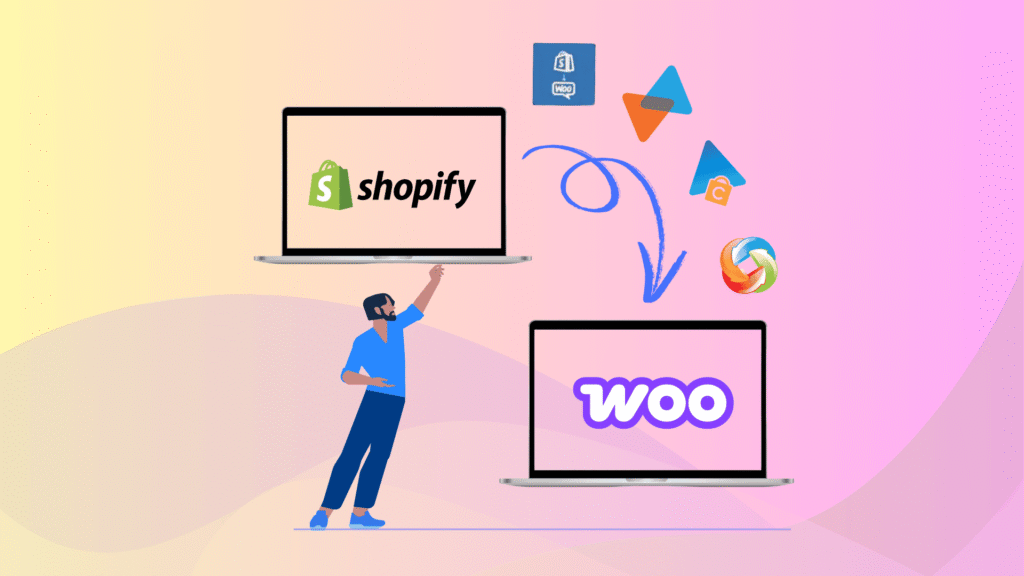Have you ever experienced the frustration of a slow-loading WooCommerce site? A slow website can cause many problems, such as poor search engine ranking, decreased profit, a lower conversion rate, and more. The speed of your site directly impacts your sales potential. Visitors become frustrated and leave when a website takes too long to load.
Suppose you’re visiting a website, and it’s taking lots of time to load. What would you do? You probably get annoyed and leave. That’s exactly what happens to your customers when your website is slow. But why does this happen, and what can you do about it? No worries!
This guide will help you find the solution to
- Why optimizing WooCommerce site speed matters
- How to measure your current website speed
- The top reasons your WooCommerce store is slow
- Actionable tips to speed up your site effectively
Key Takeaways
- Learn why WooCommerce speed matters for SEO, user experience, and conversions.
- Discover the top causes of a slow WooCommerce site.
- Follow 9 proven tips to improve the load times of your WooCommerce website.
- Use tools like PageSpeed Insights and GTMetrix to monitor performance.
- Deliver a fast, seamless shopping experience that keeps customers coming back.
Why Should You Optimize WooCommerce Website Speed
When customers visit your online store, they first notice how quickly your website loads. So, let’s explore why it’s crucial to enhance your website’s speed and how it can positively impact your online store’s performance.
- Improve Search Engine Ranking: When your website loads fast, it can increase Google’s search results. Fast websites make users happy, and Google prefers that. Google wants to show users the best websites first, and fast ones get a boost. It is important because the higher your website appears in search results, the more people will see it.
- Optimizing Site Performance: A slow website can cause issues like making visitors wait longer, increasing the chances of the site crashing, and limiting its features. Speeding up your WooCommerce store is important for improving overall site performance. Make sure to follow these 22 best tips to optimize and boost your WordPress site, making your site load faster.
- Enhance User Experience: When a website loads fast, it’s better for people using it. It makes them happy and more likely to stay. But if a website is slow, it’s annoying to them, and they might leave. So, faster loading times keep people interested and exploring your site.
- Improve Your Reputation: Having a slow website isn’t good. It doesn’t just annoy people; it can harm your brand’s image and push customers away. But if your WooCommerce store loads fast, people are more likely to recommend it to others. So, having a speedy website is about making things more accessible for people and improving your brand.
- Boost Conversions: A fast website doesn’t just mean it loads quickly. It also makes people want to look around, buy things, or do what they want them to do. People are more likely to purchase items when the site is fast and easy to navigate. If your site is both quick and secure, people can find what they want quickly and are more likely to click the “Buy Now” button or do other things you want them to do.
How to Measure the WooCommerce Site Speed
Let’s look at some tools and software you can use to check the speed of your website before we dive into tips to make it better.
- Google PageSpeed Insights: It tells you how fast your website loads on mobile and desktop. It also gives suggestions on how to make your site faster.
- GTMetrix: This tool analyzes your website’s speed and performance. It provides detailed reports with recommendations for improving load times and user experience.
- Pingdom: With Pingdom, you can monitor your website’s performance and interactions for a better end-user experience. It tracks page load times and helps identify areas for optimization to ensure your site runs smoothly.
Top Reasons Why Your WooCommerce Website is Slow
Now you know why making your WooCommerce site faster is essential, let’s look at what makes it slow. By understanding what causes slowdowns in your website, you can make smart choices to keep your WooCommerce website running smoothly for your visitors and make them happy.
Using a Slow Theme
How your website looks and how it’s made can affect how fast it loads. If your WordPress theme has messy code or your design has videos and sliders, it might slow your WooCommerce store.
To fix this, consider changing your theme to one that’s coded neatly and follows WordPress standards. If it’s not, it could slow down your site. If speed tests show problems with your store’s design, a new theme could be the solution. You can use a free tool we talked about earlier to check if the theme is causing any issues.
Unoptimized Images
Large image files on your website’s theme and product pages might be causing your site to load slowly. Online stores have lots of product images, so it’s essential to make them as small and fast to load as possible. You can do this by using tricks like lazy loading, which means the images only load when you need to see them. Also, picking the correct file formats, like WebP, can speed things up. Using adaptive images makes your WooCommerce store easier for people to use.
Inappropriate Hosting
The company and plan you pick for hosting can affect how fast your website loads. Changing to a better hosting company or plan can help if your site is slow. But it’s hard to know how fast or slow your online store will be on a specific hosting plan until you try it out.
Finding out if your host is making your site slow can be tricky. If you’ve tried everything else and your site is still too slow, think about changing hosts.
Too Many Plugins
Adding many plugins or extensions to your WordPress or WooCommerce website can make it slower. These plugins and extensions come in different types, so there’s no fixed number of how many you can have. You need to check how fast your site is before and after adding new plugins.
If your site becomes slower after adding a feature, you need to decide if that plugin is essential enough to keep, considering the impact on your site’s speed.
Outdated Configuration
It’s essential to keep your WordPress site up to date by regularly updating the software, themes, and plugins. Updates improve your site by adding new features and making it run faster. If you use old versions, your site could risk getting hacked, so keeping everything updated is safer.
WordPress lets you do automatic updates to make things easier. But be careful because updates might sometimes cause problems and break things on your site. Even though there might be some challenges, it’s still worth updating because it makes your site work better and keeps it safe from hackers.
Multiple HTTP Requests
When people visit a website, their internet browser needs to do different things to show the page, like getting images, the CSS, and the JavaScript files. If a website has a lot of tasks, it can make the browser work harder and the site load slowly.
These tasks come from your theme, plugins, and pages. If they ask for many things, it makes the browser do lots of work, and the website takes longer to load. This isn’t good because it can make visitors feel like the site needs to be fixed. So, having fewer tasks, or HTTP requests, is important to make your website faster and give people a better experience.
9 Actionable Tips to Speed Up Your WooCommerce Website
We have discovered what’s slowing your website; it’s time to make your WooCommerce website load faster. First, make sure WooCommerce is set up properly on your WordPress site. Then, focus on key areas to address slow loading. Here are some easy tips to make your WooCommerce website faster:
Implement a Cache Plugin
Caching is like a quick memory for your website, storing information to make it load faster next time. The cache is an important way to speed up slow WooCommerce sites. When your site is cached, the server gets pages ready in advance, which helps them load faster and reduces the load on the server when people visit.
However, caching can cause problems for some parts of your website that change a lot, like the shopping cart, checkout, and My Account pages. These pages are dynamic, meaning they change based on what each user does. If they’re cached, they might need to update properly, and you might see things like the wrong items in your cart or missing user information. To avoid these issues, it’s important to ensure that the dynamic parts of your site aren’t cached.
If you want to know the best cache plugins, look at our detailed article.
Choose the Right Hosting Provider
To make your website faster, choosing a good hosting provider is important. A good hosting service significantly impacts your site’s speed, security, and cost-effectiveness. Different providers have different plans with other features, so you must find one that works best. To help you decide, we’ve compared the Best WooCommerce Hosting Providers in 2025.
For WooCommerce sites, which have lots of pages and things to load, it’s even more important to have a good hosting plan that can handle all the parts of your site smoothly. Look for providers that offer features like SSL encryption (to keep your site secure), tools to help with SEO, ways to store data more efficiently (like caching), and support for Content Delivery Networks (CDNs), which help your site load faster for people all over the world.
Selecting an Optimal & Fast-Loading Theme
The speed of your WooCommerce website can be affected by the theme you choose. If you pick a high-weighted theme, it can slow down your site. So, it’s important to select a theme wisely. Look at reviews, explore different options, and then decide on a theme for your website.
Opting for an optimized WooCommerce theme can speed up your site and make it better for users.
These themes are designed specifically for WooCommerce, with features like mini carts, dedicated WooCommerce pages, and unique banners. To make the process easier, we’ve listed the top free themes for WooCommerce you can explore.
Product Images Optimization
Taking good images of your products is important for a successful online store. Great images convince people to buy. But be careful with large file sizes; the image looks good, but it slows down your website.
To fix this, optimize each product image. It means making them smaller, compressing them, and choosing the right format without losing too much quality. Do this for all your pictures, like galleries, banners, and other images, to keep your online store running fast. Finding the balance between quality and speed is key for a great ecommerce website.
Use the Latest PHP Version
Updating your website’s PHP version to the latest version improves site speed and performance. This is because newer PHP versions and WooCommerce updates are optimized for faster response times. We recommend upgrading to the new version and staying current with future updates for ongoing benefits.
To check your current PHP version, go to Tools ➝ Site Health ➝ Info. Then, scroll down until you see the “Server” option and click on it. You’ll find your PHP version and other server details there. It’s important to keep your PHP version up to date to make sure your website runs smoothly and takes advantage of the latest improvements.

Optimizing WooCommerce Database
As more people use your WooCommerce website and place orders, lots of information gets stored in the database. Over time, this can slow your site down because it’s holding onto much information you don’t need anymore.
To keep your site running smoothly, updating the database regularly is important. You can remove unnecessary entries and improve the structure of your database. WooCommerce also offers a feature called High Performance Order Storage, which is easy to understand and specifically used to enhance the database structure for ecommerce sites.
Use Content Delivery Networks(CDNs)
Adding a Content Delivery Network (CDN) to your online store can make it load faster, especially for people in different countries. Without a CDN, your site might be slow for someone far away from where your website is hosted.
If you have an online store in the US, and someone from India wants to visit your site. Without a CDN, it could take a long time for your site to load for them. However, a CDN is much quicker because it stores copies of your site’s files closer to your visitors’ location. A CDN also helps to keep your site from crashing when lots of people are trying to visit it at once. So, adding a CDN isn’t just about making your site faster; it’s also about ensuring it’s reliable and works smoothly for customers worldwide.
Update WordPress & WooCommerce
To keep your online shop running smoothly, regularly updating WooCommerce and your WordPress website is essential. WooCommerce is like the engine of your store, but it relies on WordPress, so both need updating. Your website’s theme and plugins also need updating regularly. When you update everything, you’re ensuring your store uses the latest, safest, and most efficient software available.
Regular updates are important because they fix bugs, add new features, and improve your website’s speed. By doing these updates regularly, you can keep your store working well and make sure it stays safe and competitive.
Optimize JS Execution Time
To make your WooCommerce website load faster, improving how JavaScript (JS) works is essential since it can slow things down. The tools we talked about earlier can help you see how fast your website is and give suggestions on how to reduce JS execution and improve server response times. So, optimizing JS is a crucial step in boosting the overall speed and efficiency of your WooCommerce site. Enhancing JS execution involves a few key steps:
- Condense your JS code to reduce its size, making it quicker to load.
- Remove any JS code that isn’t essential for functionality, streamlining your website’s performance.
- Ensure all scripts run at the end of the page, allowing crucial content to load first and improving overall speed.
Make Your WooCommerce Website Faster
As you can see, there are many things that can slow down your WooCommerce store, but you can make it faster by following the tips above. It’s important to have a fast website so customers enjoy shopping and don’t leave without buying anything.
Choose a good hosting provider, use tools like CDN and caching plugins, tidy up your database, and update your PHP version. Also, pick a fast theme that works well with WooCommerce and other plugins. By doing these things, your store will be quick and responsive, giving customers a happy shopping experience.
FAQs About WooCommerce Site Speed
Why is my WooCommerce site so slow?
Slow speeds can result from unoptimized themes, large images, too many plugins, or excessive HTTP requests.
Do plugins slow down WooCommerce?
Yes. Too many plugins—especially poorly coded ones—can significantly slow your site. Only keep essential and performance-optimized plugins active.
How do I test my WooCommerce site speed?
You can use tools like Google PageSpeed Insights, GTmetrix, or Pingdom to measure and analyze your site’s performance.
What are some quick fixes to speed up WooCommerce?
Quick actions include enabling caching, optimizing images, using a lightweight theme, reducing plugins, and implementing lazy loading.
What is the best way to improve WooCommerce site speed?
Optimize images, use caching, limit plugin use, use a content delivery network (CDN), and keep everything updated.
